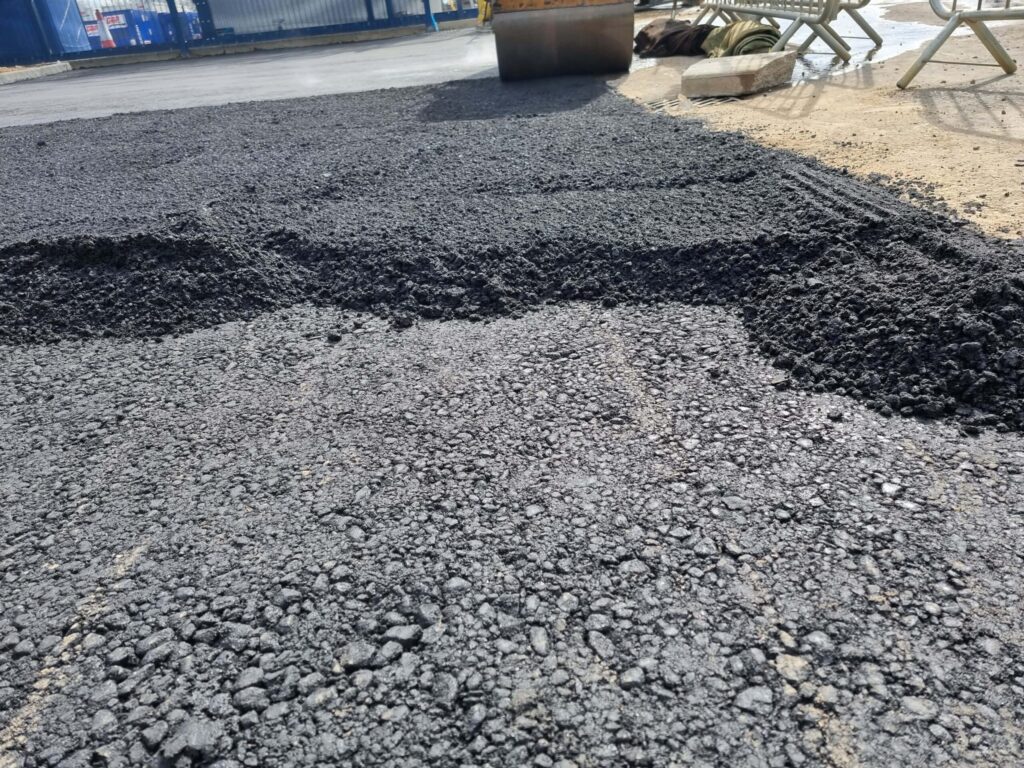Tarmac in Sports: The Science Behind Athletic Track Surfaces
Introduction: When considering tarmac, you may envision roads and parking lots. However, tarmac has also found its place in sports, particularly in the construction of athletic track surfaces. These tracks are more than just a black surface; they are engineered for precision and performance. In this blog post, presented by Halesworth Driveway Contractors, we’ll delve into the science behind athletic track surfaces and how tarmac is crucial in enhancing sports performance.
The Evolution of Athletic Track Surfaces
Athletic track surfaces have come a long way from when cinder and clay were used. Modern tracks aim to provide athletes with ideal running, jumping, and throwing conditions. Tarmac, a combination of bitumen and aggregate, is a key component in achieving these conditions.
Key Characteristics of Tarmac in Athletic Track Surfaces
- Shock Absorption: Tarmac surfaces are designed to absorb the shock generated when athletes contact the track. This reduces the risk of injuries and minimises strain on athletes’ joints.
- Traction: Tarmac offers excellent traction, allowing athletes to push off with maximum force during sprints and jumps. The surface provides the necessary grip without being overly abrasive.
- Durability: Athletic tracks endure considerable wear and tear due to constant use. Tarmac’s durability ensures that the surface can withstand heavy use and maintain its performance over time.
- Consistency: Tarmac surfaces are engineered to provide a consistent response, allowing athletes to rely on a predictable surface for their performances.
- Drainage: Proper drainage is essential to prevent water accumulation on the track. Tarmac tracks are designed with a slope and drainage system to ensure quick water runoff.
The Science of Tarmac Composition
The composition of tarmac for athletic tracks is carefully calibrated to meet specific performance requirements:
- Aggregate Size: The size and type of aggregate used in tarmac affect its shock-absorbing properties. Finer aggregates create a smoother surface, while coarser ones offer better traction.
- Bitumen Mix: The type and grade of bitumen determine the track’s flexibility and resistance to temperature variations.
- Layer Structure: Athletic tracks are typically composed of multiple layers, each serving a specific purpose. The base layer provides stability, while the top layer offers grip and durability.
- Sustainability: Modern tracks aim to be environmentally friendly. Sustainable materials and practices are increasingly integrated into track construction.
Advancements in Athletic Track Technology
In recent years, advancements in technology have further improved athletic track surfaces. These include using rubber granules in the top layer for enhanced grip and energy return and laser-leveling technology to ensure the track’s precision and flatness.
Conclusion: Tarmac is pivotal in the science behind athletic track surfaces. Its unique combination of shock absorption, traction, and durability makes it an ideal choice for providing athletes with the optimal conditions for performance. As the world of sports continues to evolve, so does the technology behind athletic tracks. If you’re considering a tarmac surface for sports or have any questions about its applications, contact Halesworth Driveway Contractors. Our experienced professionals can provide expert guidance and ensure the construction of high-quality athletic track surfaces that meet your specific needs.
Call us on: 01508 505 225
Click here to find out more about Halesworth Driveway Contractors
Click here to complete our contact form and see how we can help with your driveway needs.

